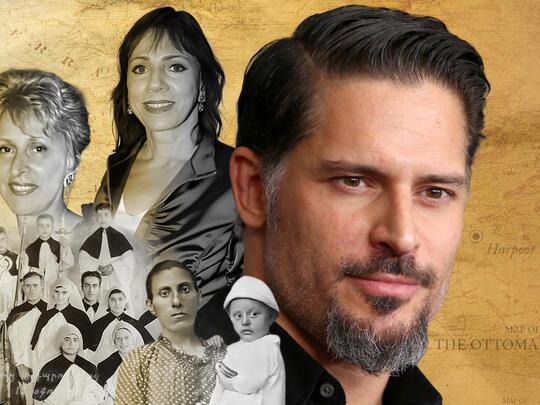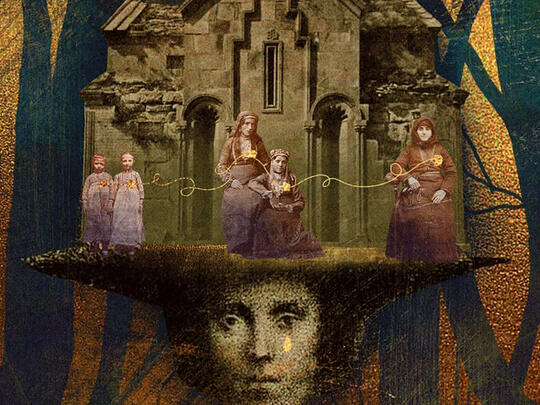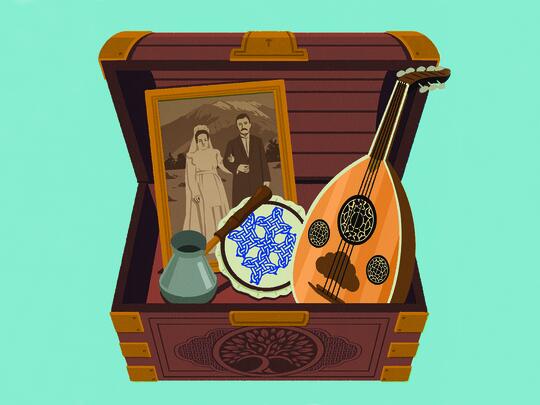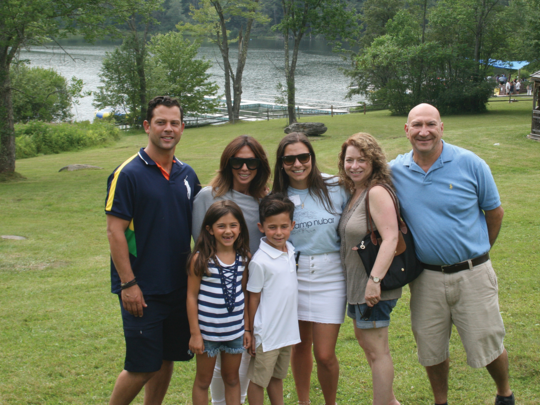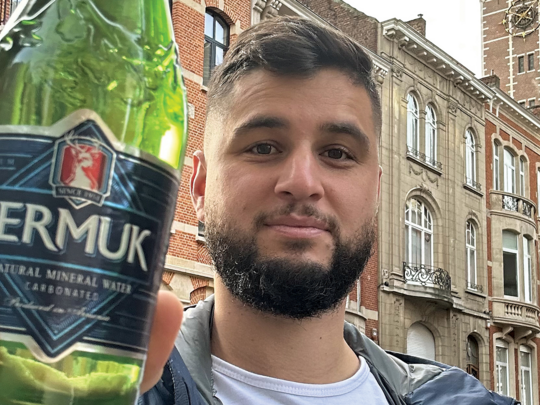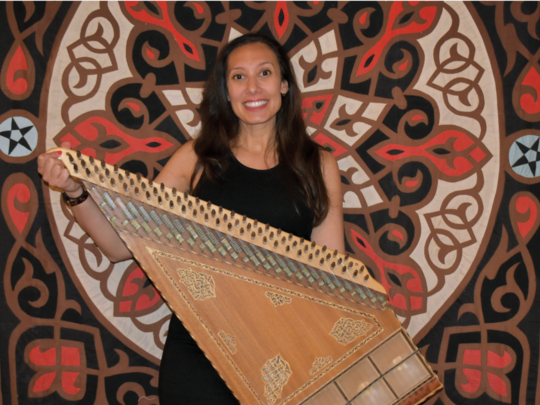On the surface, the buoyant and affable Aram Spendjian is a thirty-something go-getting entrepreneur and business owner on the move. He brims with enthusiasm about his dynamic career in the apparel industry, building lucrative relationships with luxury-label clients around the world.
However, spend time with him long enough, and you’ll discover that this quintessential native New Yorker is actually wearing an invisible reversible jacket that, when turned inside out, reveals a dyed-in-the-wool Armenian—someone who not only proudly wears his Armenian ethnicity on his sleeve, but also on the T-shirts, baseball caps, and fashion socks he designed and mass produced in Armenia for consumers in the West—using the profits to support humanitarian relief efforts during and after the 2020 Artsakh War.
To understand how and why Spendjian is so focused on Armenia is to go back to his early childhood, when he was exposed to and immersed in all the primary building blocks of Armenian identity formation. He attended Holy Martyrs Armenian Day School until third grade, when the family moved too far away to commute. He spent six summers as a camper and then counselor at AGBU Camp Nubar. Soon after graduating from the University of Miami, he became very active in the AGBU Young Professionals (YP) of Greater New York. It is also noteworthy that he was raised in a household that was a strictly enforced English-free zone, and his great-grandmother Victoria Keshishian’s idea of a bedtime story was a history lesson on the Armenian Genocide. What’s more, all his aunts, uncles, cousins and cousins-of-cousins are on equal footing with his immediate family—his Egypt-born father Ashod, his Iraq-born mother Onelia, and his younger brother Garen, also born in the U.S.
All that was missing from this intensive identity cultivation program was the final building block that would hold all the others in place—a connection with his ancestral homeland. When Armenia became a sovereign nation in 1991, Spendjian was only age two, which effectively puts him in that first generation of Diasporans to only know Armenia as free and independent—wide open to explore, discover, and, in Spendjian’s case, find that spark that would lead him to his life’s purpose.

Connecting the Dots
In 2007, at age 18, Spendjian made the long-awaited pilgrimage to the homeland and hasn’t looked back since. “Finally, there was hard proof of all the history and heritage I learned about in school and from my parents, grandparents, and great-grandparents,” explains Spendian.
“I immediately felt a sense of belonging that I didn’t always feel sitting in a public school class in New York. In many ways it was surreal to be in a country where you’re not the only Armenian kid in the school or your family members aren’t the only Armenians in town. Seeing the history and heritage come alive was amazing but also seeing lots of construction all around with modern stores, plush hotels, western brand logos on billboards, and throngs of foreign tourists made an impression too. Suddenly, it wasn’t just the past that defined my Armenian identity, it was the future that came to dominate my interest. And I wanted to be part of that future.”
A Purpose-Driven Identity
“All my life, my parents drilled it into me and Garen that we had a responsibility to carry the torch and keep Armenian identity and culture alive. My father always used the analogy that each Armenian is a link in a long and unbroken chain. And if we don’t do our part to keep that chain strong, if even one link breaks off, that’s it.” Spendjian goes on to say that what his parents were doing was setting the stage for him and his brother to step up to this responsibility as previous generations could not. “Yes, Armenia connects us Diasporans to our past. But it also inspires us to help connect Armenia to the future. Without an eye on tomorrow, Armenia can lose the freedom it enjoys today. Our family has chosen to prevent that scenario from happening through economic development,” he says.
Today, Spendjian travels to and from Armenia often, occasionally as board member of Garen Spendjian’s and Matthew Madoian’s non-profit organization Hoops for Hayastan, which raises funds for Armenian youth living in economically deprived areas of Armenia with very limited outlets for recreation and sports. However, most times, he is in Armenia doing his day job as the president of a full-service private label garment manufacturing company called Lorens NYC.
To date, Lorens NYC is in various stages of sampling, manufacturing, and shipping luxury apparel to fashion companies with such posh labels as Mackage, Kith, Alexander Wang, Derek Lam, Rudsak and Gorski, among others—working with over 30 factories in Armenia, each capable of handling its own specialties. This is in large part thanks to the trust that Ashod Spendjian earned over his 40 years in the garment industry across his vast network of contacts, sources, and suppliers worldwide. It is up to the younger Spendjian to remain in close contact with these factories to ensure they have all the right inputs to produce quality output and achieve total client satisfaction from production to delivery.
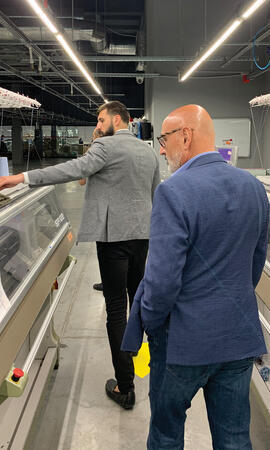
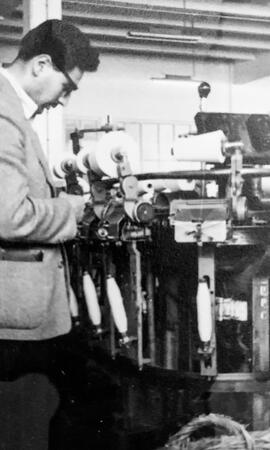
The name Lorens derives from a story from the 1700s about a long lost relative in the family tree of his mother Onelia (nee Kassabian). He moved to Bardizag, Turkey from Lori, one of the 11 provinces of present-day Armenia. Upon his arrival, he was promptly dubbed the lorentzi, (a person from Lori) which evolved into just Lorentz. Fast forward to this June, when Spendjian makes a special visit to Lori country to marry Sanan Panossian, an American-born Armenian from San Francisco, who he happened to meet while they were both visiting Armenia. Coincidentally, Sanan is named after the 10th century Monastery of Sanahin, a World Heritage site, also located in Lori. The region’s picturesque landscape is ideal for a summer wedding and the couple has gone all out to make it an authentic traditional Armenian tying of the knot. They will follow some of the customs and rituals of Sanan’s ancestral folklife of Musa Ler, such as a bridal henna party, while honoring Spendjian’s family origins with regional dishes, music, and dance from Dickranagerd, Smyrna, Bardizag, and Kayseri.
Spendjian acknowledges how all these histories, ironies, familial influences and homeland experiences have brought him to where he stands today—as an industrialist-in-the-making with an ambitious vision to transform Armenia into a magnet for high-end global fashion brands from the West.
Relabeling Armenia
The Spendjians are on a mission to revive Armenia’s manufacturing base, which saw its demise with the fall of the Soviet system in 1991. Only this time, their long-term vision is that Armenia carves out its own niche in the luxury goods category, leaving the mass market retail brands to the usual go-tos like Turkey, South Asia, and the Far East. They also don’t see why Armenia’s factories need to limit their exports only to the CIS countries. Plus, to raise the stakes even higher, they would like Armenia to eventually have its own vertically integrated industrial sector with a secondary tier of spin-off businesses that feed into the production process in-country. This would make Armenia even more cost-competitive, efficient, and attractive to iconic global brands and clients—not to mention all the new skilled jobs that can be generated to stem Armenia’s looming demographic crisis largely due to labor emigration. In a recent report of Armenia’s 2022 Census, the population dipped below 3 million for the first time with a total of 2.9 million.
Nonetheless, the Spendjians remain bullish on Armenia, despite the current uncertainties that now make other Diasporan businesses and foreign investors think twice. In the words his father, “If not now, when is the right time to build Armenia’s economy?”
Suddenly, it wasn’t just the past that defined my Armenian identity, it was the future that came to dominate my interest. And I wanted to be part of that future.
And, it’s not quixotic thinking. Simply put, the entire Spendjian family is committed to putting Armenia’s luxury goods manufacturing sector on the world map in the same way that the country’s premium wine industry took off within a decade, elevating Armenia’s global image.
Family Legacy
The Spendjians’ success in Armenia in a mere four years is the continuation of more than a century of successive ancestors who were pioneers in the apparel industry back in their day—even pre-dating the Genocide. “Very few Diasporans are able to trace their family tree as far back as six generations and across multiple continents like we can,” says Spendjian. “And we’ve found this indestructible thread woven into our family legacy from which we draw inspiration and confidence every day.”
He proudly recounts the history. “It all started with my great-great-great grandfather who manufactured fezzes in Istanbul, Turkey. From there, the business was carried on by my great-great-grandfather who eventually went to Manchester, England and was importing fabrics into Turkey and Western Armenia. Then my great-grandfather Zarmair Keshishian took that business from Manchester to Cairo, Egypt and eventually opened a fabric store called La Princesse, selling luxury fabrics for royalty and other elite clients. Ultimately, my grandfather Aram Spendjian was put in charge of all the dyeing and weaving mills in Egypt. Then in 1970, my father’s maternal uncle Vartan Keshishian moved to Taiwan, becoming one of the earliest production agents in that country. The summer after my father graduated from college, with a minor in Chinese, Uncle Vartan invited him to come work for him on a temporary basis. It turned out to last all through the 1980s. By the time my father returned to the states, he was way ahead of the curve on the emerging global supply chain and the ins and outs of doing business in the Far East. He also had a blueprint of how economies could be built on light industry. So today, my father, brother and I are taking that legacy full circle to where our family business was meant to be all along—our own Armenian homeland.”
Communication Counts
For someone born in America, Spendjian speaks an impeccably fluent Western Armenian and, equally rare for his generation, is proficient in reading and writing in the Armenian alphabet. “I am convinced that one of the reasons why we have made such inroads with the top local factories in Armenia is because there is no real language barrier. In fact, our first success story in the country began with my sending an unsolicited email to a factory in Armenia, written in Armenian characters. This one skill set has opened many of the right doors for us. It allows us to discern who are the serious and trustworthy local players and who is open to expanding their knowledge and aspire to world-class standards of doing business. Four years ago, my father and I determined that there is more of a realization in Armenia that the West is a viable market. The world is a smaller place and, with the trust that we have built and our connections, we can help Armenia enter the Western market. We speak the same language, whether we are conversing in Armenian or talking business.
Putting it all into perspective, Spendjian says, “I have built very satisfying business relationships and forged close personal friendships with locals that I have come to treasure as much as I do my forever-friends from Armenian day school, summer camp, and all my other Armenian activities back on my home turf.”
Then, he ponders for a moment and makes an admission: “If truth be told, I am not so sure anymore if New York is my home turf. I feel really bonded to Armenia in ways I never could have imagined. I suppose I feel the reverse of that old saying, ‘It’s not personal, it’s just business.’ For me, it’s not just business. It’s also very personal.”


